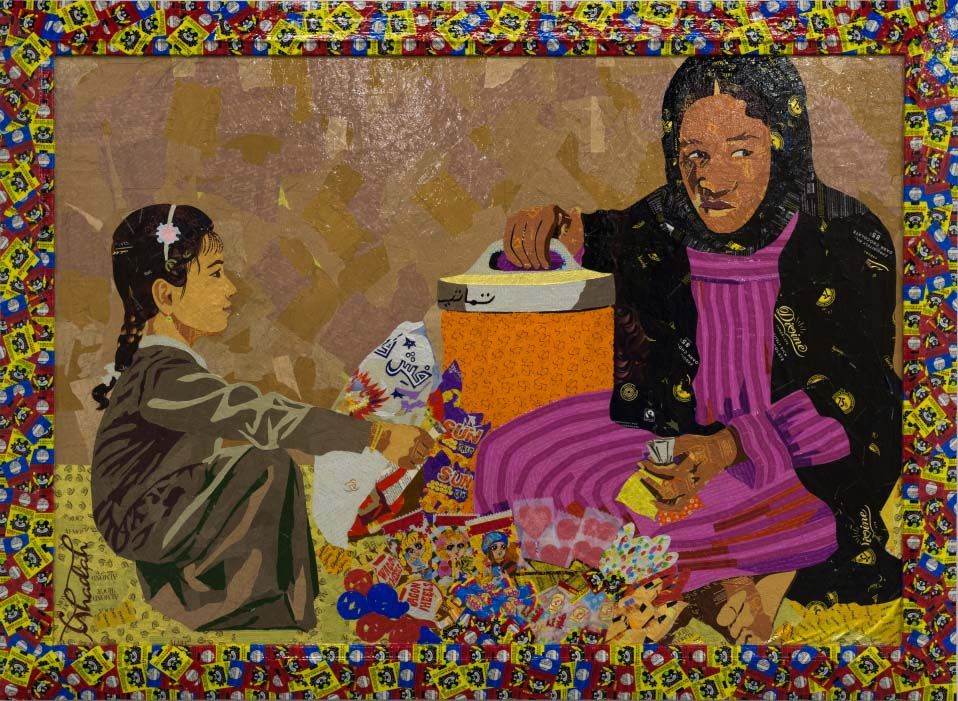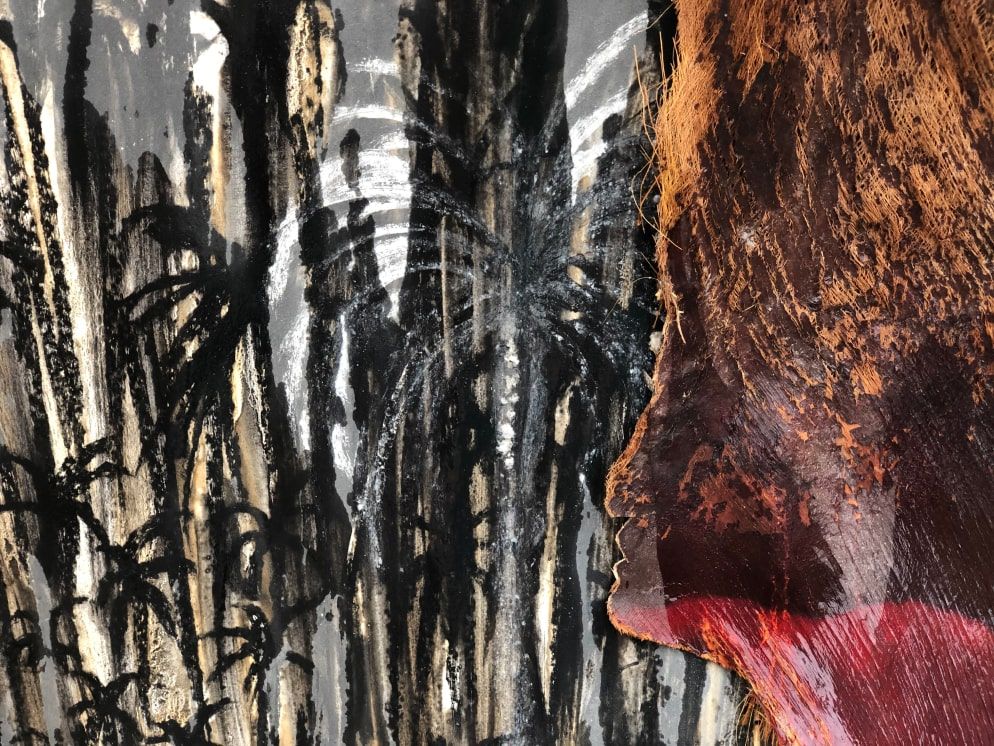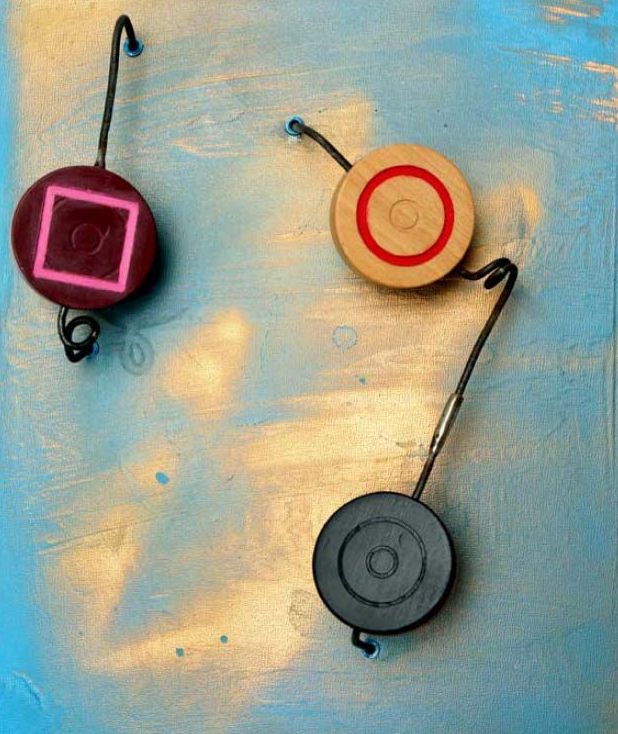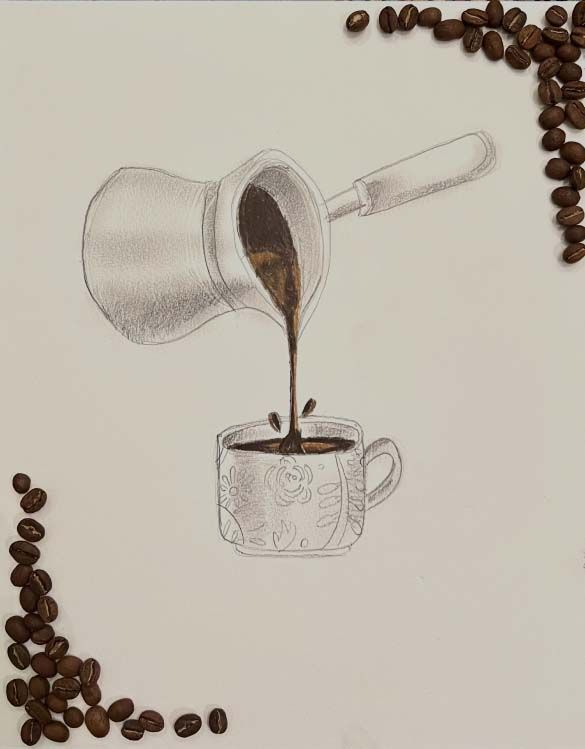The Art of Candy
The Mayor, by Ghadah Al-Rabee. Courtesy of the artist and Athr Gallery.
“My philosophy is to constantly reconsider our lifestyles and think about what we see as waste and disposable and what we can achieve by recycling it and using it again. The world has become too crowded, and we need to find solutions as soon as possible...”
Ghadah Al-Rabee, from Madina, has mastered her own creations. She managed to turn disposed of candy wrappers into a work of art that reflects her local cultural symbols as she draws many portraits of Saudi people in their cultural attire. She also uses her art to create a unique spin on iconic artwork such as the American Gothic Painting by Grant Wood, and making it local by displaying a Saudi couple instead and naming it “Siti Saadeh and Sidi Saeed.”
Creating art through candy wrappers isn’t her only creative power. She also paints using oil and acrylic by creating circular-wave brush strokes on the canvas as she portrays scenes from her life and the Hijaz area cultural symbols where she grew up and lived.
Here she shares her views with Ithraeyat
Magazine on various topics.

‘The old Grocery store’, by Ghadah Al-Rabee. Courtesy of the artist and Athr Gallery.
Q1.
When did you start your journey as an artist, and why?
I started painting when I was in the fourth grade, and I entered the art scene through the Arts and Culture Association in Madina, and I started as a professional artist in 2013 with Athr Gallery.
Q2.
When were you first inspired to use candy wraps in your art?
The idea of using candy wrapping first came to me in 2009, after I visited Art Dubai. I remember that I was drinking tea with my husband and I was thinking about everything I saw there. I told him that it occurred to me to create a painting with the wrappings of KitKat and other sweets. Without hesitation, he told me that it was a beautiful idea and encouraged me to do it. I told him there may be losses, and it might fail. However, he asked me not to think about
Q3.
How did you develop your artistic style?
I developed my method through constant experimentation, with some failings at the beginning because it was the exploration stage of a new raw material that was hard to deal with its varied kind. It could be tin, paper, nylon, plastic, cardboard, among others. Each material needed a different way of handling.
Q4.
How was the public reaction to your artwork?
At first I faced people’s mockery of my project, but I had this long-term view that this material was wasted, and we had to find a way to make use of it.
Q5.
Is it hard to find or collect materials for your artwork?
It is really hard to find the materials. In some works, I need raw paper of a certain color, and I find the color, but it’s nylon or tin, so I need to search more. Sometimes,I travel to find what I’m looking for.
Q6.
Is sustainability a core theme in your practice as an artist?
It’s absolutely fundamental because some of these wrappings are a major cause of pollution, and some of them are not biodegradable, and between these two problems, I try to use them to produce better works.
Q7.
What does your art mean to you?
My art is the air I breathe, the space of my freedom, and the language I speak so fluently.
Q8.
What artists do you admire as role models, and why?
I adore the work of the pioneers of art such as Leonardo da Vinci, Van Gogh, Salvador Dali, Monet, Manet, Tamara de Lempicka, Rafael, Michelangelo and many others. What excites me most in their works is the spectacular theatrical manner in which they almost tell a story, and they leave the viewer to choose the end of it.


